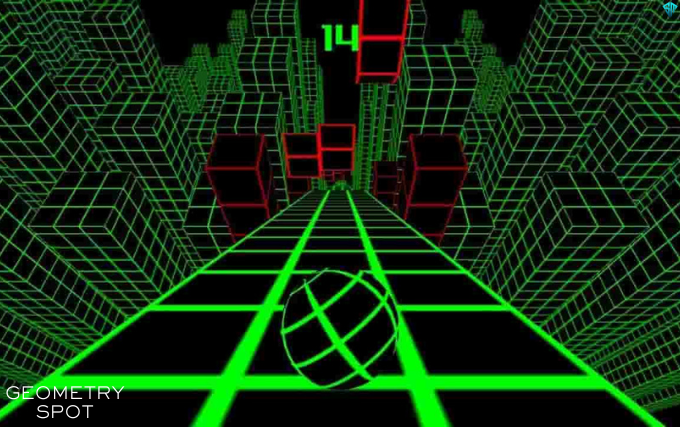For millennia, people have been captivated by geometry, a fundamental aspect of mathematics. The study of forms, sizes, and space qualities has a long history in human history, spanning from the elaborate designs of ancient architecture to contemporary technical wonders. The phrase “geometry spot” conjures up an image of a center or focus point where geometry’s wonders are revealed.
Understanding the Basics of Geometry
Fundamentally, geometry is the area of mathematics that studies the characteristics and relationships of solids, surfaces, lines, and points. The topic is separated into multiple subfields, such as:
- Plane Geometry: Focuses on flat shapes like circles, triangles, and rectangles.
- Solid Geometry: Explores three-dimensional shapes such as spheres, cubes, and pyramids.
- Analytic Geometry: Combines algebra and geometry using coordinates.
- Differential Geometry: Studies curves and surfaces using calculus.
These branches form the foundation of various practical applications, from art and design to physics and engineering.
The Historical Significance of Geometry
The history of geometry is extensive and extends back to prehistoric times. While the Greeks, especially mathematicians like Euclid and Pythagoras, established the foundation for modern geometry, the Egyptians built the pyramids using geometric principles.
“Elements,” written by Euclid, is regarded as one of the most important books in mathematical history. It established axioms and theorems that are still applicable today and methodically arranged geometric information. Thus, the geometric point is a continuation of millennia of inquiry and discovery rather than merely a contemporary idea.
Geometry in Nature
The fact that geometry appears in nature is among its most intriguing features. Geometric patterns and designs abound in the natural world, including:
- Fractals: Complex patterns that repeat at different scales, seen in snowflakes and tree branches.
- Symmetry: Found in butterfly wings, flowers, and even human faces.
- Spirals: Observed in seashells and galaxies.
- Hexagonal Patterns: Seen in honeycombs and basalt columns.
These natural occurrences highlight the universal nature of geometry, making it a true geometry spot in the natural world.
Applications of Geometry in Design and Architecture
Geometric concepts are essential in design and building, which is where the geometry spot is found. Geometry is used by designers and architects to produce visually appealing and structurally sound designs. Important uses consist of:
- Symmetry and Balance: Used to create harmonious and visually appealing structures.
- Proportions and Ratios: Such as the golden ratio, which has been used in famous works like the Parthenon and the Mona Lisa.
- Tessellations: Patterns of shapes that fit perfectly together, used in tiling and mosaics.
- 3D Modeling: Used in modern architecture and computer-aided design (CAD).
The Sydney Opera House, the Eiffel Tower, and Islamic art’s geometric designs are a few examples of famous geometric architecture.
The Role of Geometry in Modern Technology
Geometry is essential to technology in the modern world. Geometric concepts and algorithms are essential to everything from computer graphics to robotics. Among the examples are:
- Computer Graphics: Geometry is used to create realistic 3D models and animations.
- Engineering: Involves geometric calculations for designing machinery and infrastructure.
- GPS Technology: Relies on geometric principles for navigation.
- Artificial Intelligence: Uses geometric data for image recognition and machine learning.
The geometry spot in technology continues to expand as advancements in computing power enable more complex applications.
Geometry in Education
A crucial component of the curriculum, geometry teaches pupils how to reason logically and solve problems. More complex issues in science and mathematics are based on ideas like angles, forms, and transformations. The use of geometry in the classroom encourages critical thinking and creativity, two qualities that will be crucial for future innovators.
Artistic Expressions of Geometry
Geometry has long been employed by designers and artists to produce beautiful artwork. Geometry offers a foundation for artistic expression in everything from complex sculptures to abstract paintings. Well-known instances include:
- M.C. Escher: Known for his mathematically inspired artworks featuring impossible constructions and tessellations.
- Islamic Art: Renowned for its intricate geometric patterns.
- Modern Art: Geometric abstraction has influenced artists like Piet Mondrian and Wassily Kandinsky.
The geometry spot in art showcases how mathematical principles can inspire beauty and creativity.
The Future of Geometry
Geometry’s function is reaching new heights as science and technology develop further. Geometric principles are essential to emerging industries like space exploration, nanotechnology, and quantum computing. The future geometry spot could consist of:
- 4D Geometry: Exploring shapes and structures in higher dimensions.
- Virtual Reality: Using geometry to create immersive digital environments.
- Biomimicry: Applying geometric patterns from nature to solve human challenges.
- Sustainability: Designing efficient and eco-friendly structures using geometric optimization.
These advancements demonstrate the timeless relevance of geometry in shaping the future.
Conclusion
The geometry spot is a physical and figurative center where the wonders of patterns and shapes come together. From its prehistoric beginnings to its contemporary uses, geometry has had a significant impact on our environment. Geometry has countless chances for investigation and creativity in the fields of nature, technology, art, and education. We can discover new possibilities and be amazed by the beauty of the universe through the prism of geometry if we comprehend and value its tenets.


